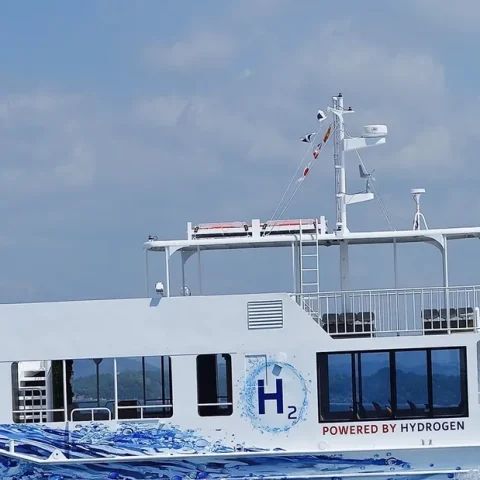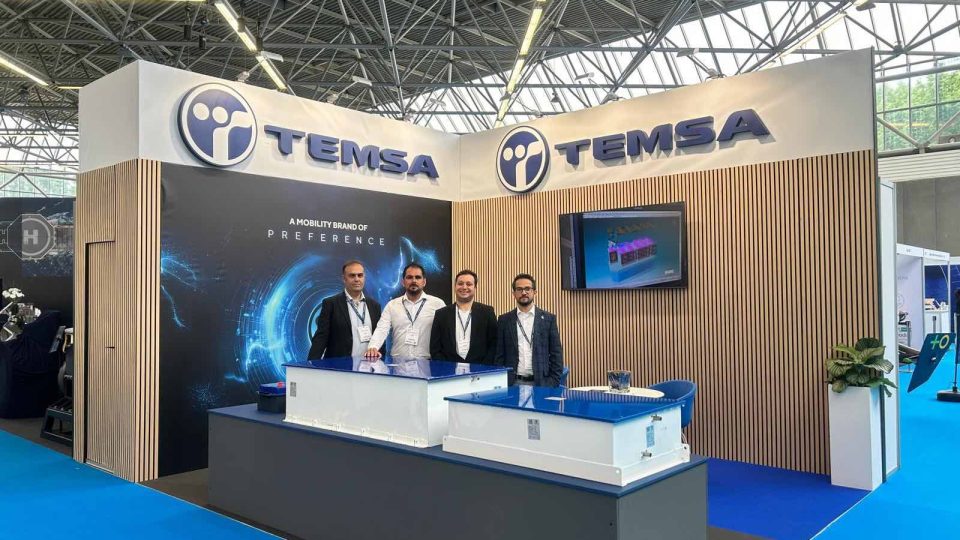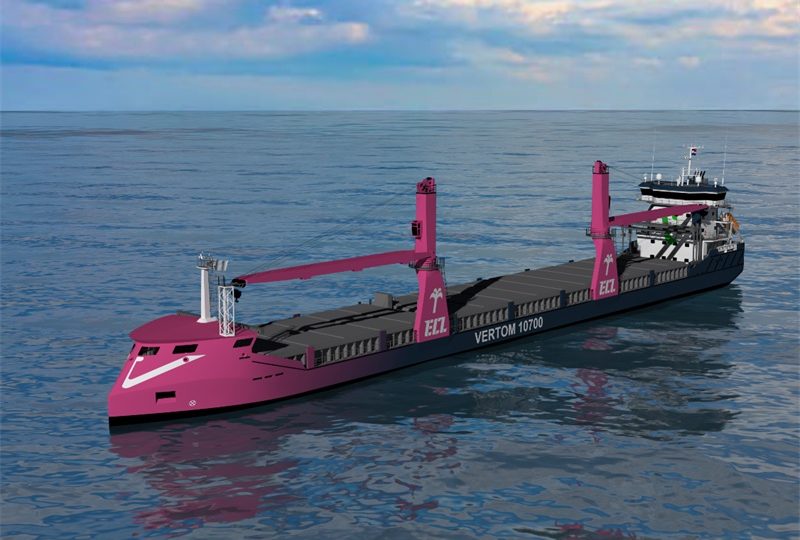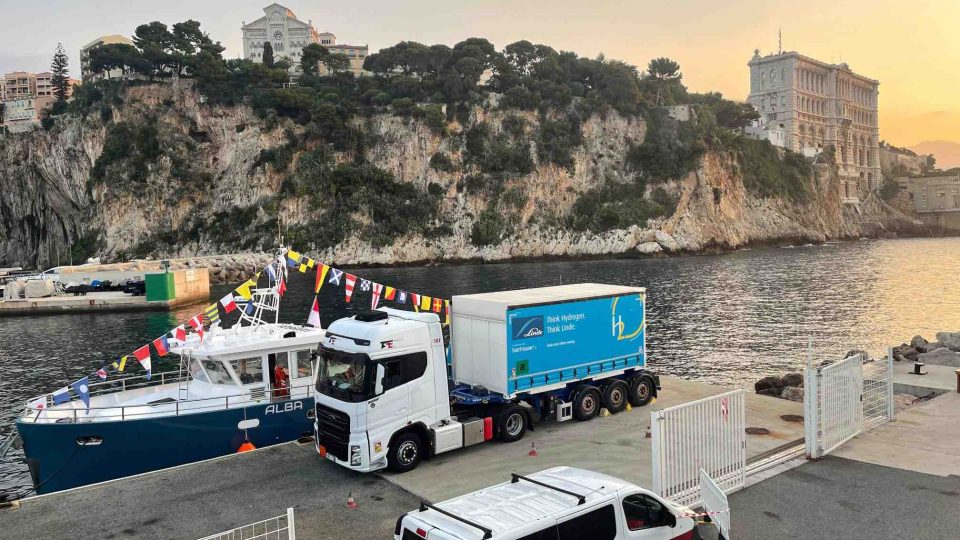Volvo Penta powers hydrogen ferry with CMB.Tech
In an effort to reduce greenhouse gas emissions, Volvo Penta and CMB.Tech collaborated to create dual-fuel, hydrogen-diesel engines for marine applications. This technology is now powering Hydrobingo, a hydrogen-powered ferry in operation off the coast of Japan.

In 2022 Volvo Penta and CMB.Tech announced a partnership to develop dual-fuel marine engines that could run on both hydrogen and diesel. As a fuel source, hydrogen dual fuel technology holds the promise of being an important interim solution to reducing carbon emissions before suitable net-zero emissions alternatives become viable. Its ability to blend hydrogen with diesel provides a cleaner fueling option that is robust and reliable. With dual-fuel engine technology, if no hydrogen is available, users can still power their vessels on diesel alone. The result of the collaboration between Volvo Penta and CMB.Tech is now rippling through the industry.
Volvo Penta D13 engines are powering Hydrobingo, a hydrogen-diesel, dual-fueled commercial ferry built in Japan by Tsuneishi Facilities and Craft. The 80-passenger vessel has been operating off the coast of Japan for more than a year. It can cruise at a high speed of 23 knots when running on dual-fuel and has a range of 120 km. Its name originates from “hydro,” short for hydrogen, and “bingo,” short for the Bingo Province in Japan near where it operates.
Hydrobingo’s ongoing daily operation proves the success of the two companies’ partnership, as well as the implementation of dual-fueled engines in a commercial application. At a typical cruising speed of 12–22 knots, the vessel is showing CO2 emissions reductions of up to 54%, including a 28% lowering of NOx (nitrogen oxides) when compared with ferries fueled only by diesel.
“The success of Hydrobingo reflects an important step towards the creation of marine engines that can operate fully on hydrogen, which could have a significant impact in lowering greenhouse gas emissions and enabling companies to reach net-zero targets,” said Jan-Willem Vissers, director marine commercial global, Volvo Penta. “Hydrobingo is providing real-world data from a successful commercial operation. We are learning important lessons about operation, storage, accessibility and other aspects that will enhance future efforts in this space.”
Dual-fuel technology
Hydrogen as a power source hasn’t been tested much at sea. Volvo Penta and CMB.Tech worked for years to develop a conversion kit that would enable Volvo Penta engines to utilize a mix of hydrogen and diesel. It works seamlessly with certain types of Volvo Penta D13 engines and provides the same power and reliability as traditional combustion engines.
Hydrobingo uses two Volvo Penta D13 engines that feature this new technology. The vessel is equipped with a hydrogen trailer at the stern that can deliver hydrogen to the engine through a double-walled pipeline. The hydrogen is stored in a tank that can be loaded and unloaded using a ramp, enabling simple transportation to and from fueling stations.
The vessel also has several hydrogen-related applications that reflect the dual-fuel ship design based on the requirements of the IGF Code and according to the “Safety Guidelines for Hydrogen Fueled and Fuel Cell Ships” made on the basis of hydrogen fuel specialties.
Roy Campe, chief technology officer at CMB.Tech reported, “Since Hydrobingo entered operation, the experience on board has been very smooth. The fact the setup is dual-fuel means that power can simply be switched from running between diesel and hydrogen based on requirements and availability. This pilot is an important step in our longer-term goal of offering 100% hydrogen-fueled vessels.” He added: “Hydrogen is a highly effective power solution that can offer significant emissions reductions now. We are paving the way to sustainable solutions at sea, and we are learning by doing. We want to demonstrate to the whole marine ecosystem that, of the multiple alternative power solutions available, hydrogen should be a serious consideration.”
Volvo Penta and CMB.Tech’s dual-fuel technology, while proving successful, is only a step towards emissions-free boating and achieving net-zero goals. A dual-fuel hydrogen package will be available on Volvo Penta’s world class D8 engine. “In the long term, we expect that vessels will run on 100% hydrogen fuel cells. Until then, dual-fuel solutions are proving to be better for the environment while simple to install and use,” Vissers said. “Dual-fuel hydrogen power is a viable solution that boat builders and owners can adopt right now to reduce emissions and make progress toward their sustainability goals.”











